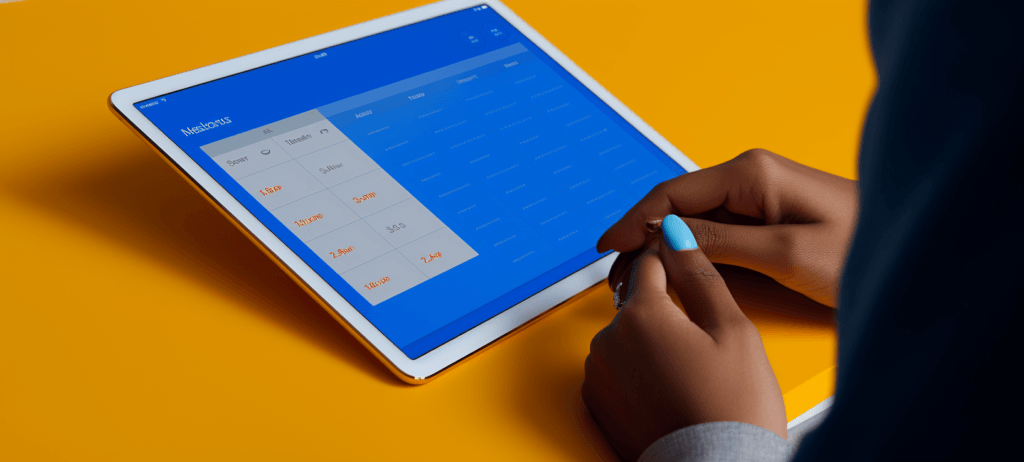-
 6 min. read
6 min. read
-
 Trevin Shirey
Trevin Shirey VP of Marketing
VP of Marketing
- Trevin serves as the VP of Marketing at WebFX. He has worked on over 450 marketing campaigns and has been building websites for over 25 years. His work has been featured by Search Engine Land, USA Today, Fast Company and Inc.
Demand generation has become one of the biggest buzzwords in marketing lately. But what does it mean? Have people actually done it?
And does it work? We’ll answer all of that below.
What does “demand generation” mean?
Demand generation means creating something for your business’s potential audience and promoting it online to bring more customers to your website. You can think of it as the meeting point between your company’s value proposition and brand awareness campaigns.
(You may find a different definition of demand generation depending on your source. We use this one because it’s specific and simple, especially compared to other definitions online.) You can measure demand generation with the same KPIs you may use with other Internet marketing strategies. Conversions, bounce rate, and even traffic on designated pages of your site can all reflect an increase in demand.
This concept of “demand” comes from the economic principle of supply and demand. With that in mind, demand generation breaks down to simple economics.
A quick note on supply vs. demand
Your company already has a supply — the product or service you offer — so all you need are people who want to buy from you. That’s the demand. The more demand you generate for your business, the more you’ll earn and grow — as long as you have the supply to back it up.
It’s important that you only promote as much as you can handle. Too much demand creates a shortage, which means you won’t have enough product or worker hours to accommodate every customer. Some companies can pull this off to increase sales — called artificial scarcity — but it’s a gamble.
Intentionally creating a shortage typically results in lost revenue. The solution(s) is to increase product quantity or hire new workers. Too much supply creates a surplus.
That might sound good, but it means you have an overstock of product or worker hours. In other words, you lose money by having too much product on the shelf or too many paid workers without anything to do. The solution(s) is to run a sale on the overstocked product or lay off workers.
Clearly, no business wants to do either of those things. That’s why it’s so important to keep an eye on your demand generation strategies so you can expand your business with as few growing pains as possible. So how do you generate demand for your products or services?
Let’s take a look at a few examples for answers.
1. Newegg’s Valentine’s Day sale (email marketing)
Medium: Email marketing
Newegg is an online electronics retailer. Like every retailer, they host dozens of sales every year to get rid of surplus product at lower prices. That way, they can keep their products moving and make room for newer ones.
 This time around, Newegg is pushing their affordable electronics by playing off the theme of love, which is good timing (at least at the time of publication). Their choice of email marketing is smart, too. Newegg knows that people who buy electronics tend to buy them pretty frequently.
This time around, Newegg is pushing their affordable electronics by playing off the theme of love, which is good timing (at least at the time of publication). Their choice of email marketing is smart, too. Newegg knows that people who buy electronics tend to buy them pretty frequently.
Smartphones, tablets, sound systems, laptops, even raw computer components — if someone buys it once, they’ll probably buy it again. Newegg capitalizes on that by telling their previous customers about the upcoming sale. It’s timely, smart, and engaging to boot.
Plus, this email is a great example of email marketing in general. It entices the recipient and makes them want what’s featured. For this demand generation campaign, Newegg would look at open rates and link clicks to see how they did.
They may even add UTM tracking to the links in the email so they can tell exactly how many conversions they got for their trouble. Altogether, Newegg pulled off a smart campaign. But if you’re not an electronics retailer, don’t worry — there are plenty of other strategies to try.
2. WebFX’s guest post on Hootsuite
Medium: Blogging
WebFX is an Internet marketing agency (hi, if we haven’t met), and we’ve experimented with demand generation for a while now. In December, our president William Craig got the chance to write a piece for Hootsuite.  So how does guest posting generate demand?
So how does guest posting generate demand?
The topic of Bill’s post is no accident. It focuses on Hootsuite’s primary use (social media), one of WebFX’s services (social media marketing), and a popular industry topic (marketing to Generation Z). It’s practically a guarantee that someone reading this would also be a qualified lead for WebFX’s social media plans.
With that “everybody wins” approach, Bill promoted his name and WebFX to those who may not have heard of either before reading the post. Is that going to directly drive sales and leads? No.
But it builds awareness and potentially exposes readers to WebFX for the first time. That’s the first step for any potential customer — and it’s an ideal method to drive demand. The audience reading the article may not have considered marketing to Generation Z before.
But after they see that Bill — and WebFX, by extension — knows something about it, maybe they’ll want to learn more. That leads them to WebFX, where we can meet their demand with our marketing team. For this demand generation campaign, we’d want to look at KPIs like inbound traffic and conversions via user flow.
Both of those will reflect the demand generated by the guest post by indicating the number of interested people coming to WebFX and how many of them actually take the steps to become a new client. All it took was a little outreach, a few hours of writing, UTM setup, and analysis.
Bonus Read: Demand Generation vs. Lead Generation
What about SEO and PPC?
You might’ve noticed we didn’t include anything about SEO or PPC on this list. That’s because SEO and PPC don’t really generate demand — they respond to it. If someone’s looking up keywords related to your brand, then they’re already demanding your products or services.
Having your brand show up in search results is helpful for earning that new customer, but that’s not why they started searching in the first place. By all means, continue investing in SEO and PPC. They’re excellent strategies, and they have the potential to earn you triple-digit ROI – as long as people are already interested in the type of products and services you have to offer.
Demand generation campaigns can be a great way to make sure that they are.
Do you use demand generation?
Do you have an active demand generation strategy? What results have you seen from it? Let me know in the comments!
-
 Trevin serves as the VP of Marketing at WebFX. He has worked on over 450 marketing campaigns and has been building websites for over 25 years. His work has been featured by Search Engine Land, USA Today, Fast Company and Inc.
Trevin serves as the VP of Marketing at WebFX. He has worked on over 450 marketing campaigns and has been building websites for over 25 years. His work has been featured by Search Engine Land, USA Today, Fast Company and Inc. -

WebFX is a full-service marketing agency with 1,100+ client reviews and a 4.9-star rating on Clutch! Find out how our expert team and revenue-accelerating tech can drive results for you! Learn more
Try our free Marketing Calculator
Craft a tailored online marketing strategy! Utilize our free Internet marketing calculator for a custom plan based on your location, reach, timeframe, and budget.
Plan Your Marketing Budget

Maximize Your Marketing ROI
Claim your free eBook packed with proven strategies to boost your marketing efforts.
Get the GuideTry our free Marketing Calculator
Craft a tailored online marketing strategy! Utilize our free Internet marketing calculator for a custom plan based on your location, reach, timeframe, and budget.
Plan Your Marketing Budget





